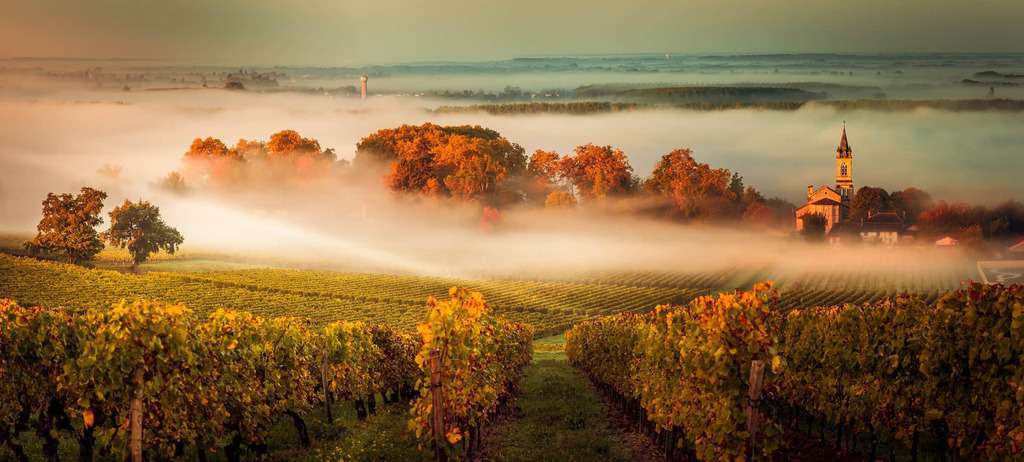The left bank of Bordeaux is home to the legendary First Growth and Second Growth chateau in the towns of Margaux, Saint-Julien, Pauillac, and Saint-Estephe. These gravel-rich areas produce Cabernet-heavy blends that are known for their ageability. Winemaking techniques typically incorporate a significant dose of new oak and extended maceration, leading to wines that are not meant to be drunk for at least 5-10 years.
These wines command very high prices and are often used as investment pieces rather than drinking wines. This concept can lead to some rather heated discussions among those in the wine industry!
Famous First Growth Bordeaux Chateau
Chateau Margaux, Chateau Lafite-Rothschild, Chateau Latour, and Chateau Mouton-Rothschild are the First Growths that tend to obtain the highest prices. Their First Growth ranking is the result of an old classification system dating back to 1855, when Bordeaux was a very different place… even the varietal makeup of the vineyards was completely different, with a much higher percentage of Malbec and Carmenere constituting the plantings. Thus branding has really created the wine investment industry in this area.
These wines are generally not ready for drinnking for at least 8-10 years, preferably longer. When they are aged properly, they offer an incredible wine drinking experience for those lucky enough to participate… velvety tannins, with a wild, gamey backdrop framing blackcurrant and dark berry fruit, topped off with savory spice.
RELATED: A Guide To Pairing Red Bordeaux Wines with Food
The Best Left Bank Bordeaux Vintages
Vintages are critical as well. Great vintages that are generally higher priced include 1982, 1989, 1990, 1996, 2000 (this vintage is not really my favorite… it was played up quite a bit by the Parker phenomenon), 2005, 2009, 2010 and 2015.
More Affordable Bordeaux Wine Recommendations
For those who want to spend a bit, but not a fortune, on a Bordeaux from the Medoc, a handful of other Chateaux offer fantastic alternatives that won’t break the bank. On the higher end, Cos d’Estournel (in fact the 1982 is one of my favorite wines of all time), Leoville-Las-Cases (a classic), Ducru-Beaucaillou (can be a little more elegant), and Gruaud Larose (an intense, funky wine loaded with aromas of fresh earth and a little barnyard) are fantastic examples of chateaux that have been producing great Bordeaux for a long time.
Lesser-known labels that offer some excellent Bordeuax as well are Chateau Haut-Marbuzet, Chateau Loudenne, Chateau Haut-Beausejour, and Chateau La Peyre.

A great overview of wines from one of the most storied regions–particularly appreciate the more affordable lesser known options as budget and age can often be a challenge (!)
Great read, I’ll bookmark this for when I am next buying some Bordeaux!
I live in Bordeaux, so I know Margaux and the Médoc very well. Of course, there aren’t only first and second growths – there are five growths in the classification. One of my absolute favorites, which is a fifth growth. I also love Château Dauzac, another of the fifth growths. And then there are quite literally thousands of châteaux that aren’t part of this old 1855 Classification system producing really fabulous wines.
The classification was completely political at the time and though it helped some of the big names like Latour and Margaux fetch the prices that they do, being part of the classification system is definitely not indicative of being the best anymore. There are actually many more affordable Bordeaux these days than the uber expensive ones that can command prices into the thousands based on their name alone.
Thank you for these insights. I will admit to looking past these expensive wines, thinking of them like California Cult wines that are a bit too much hype. I appreciate you suggesting some affordable Bordeaux recommendations!